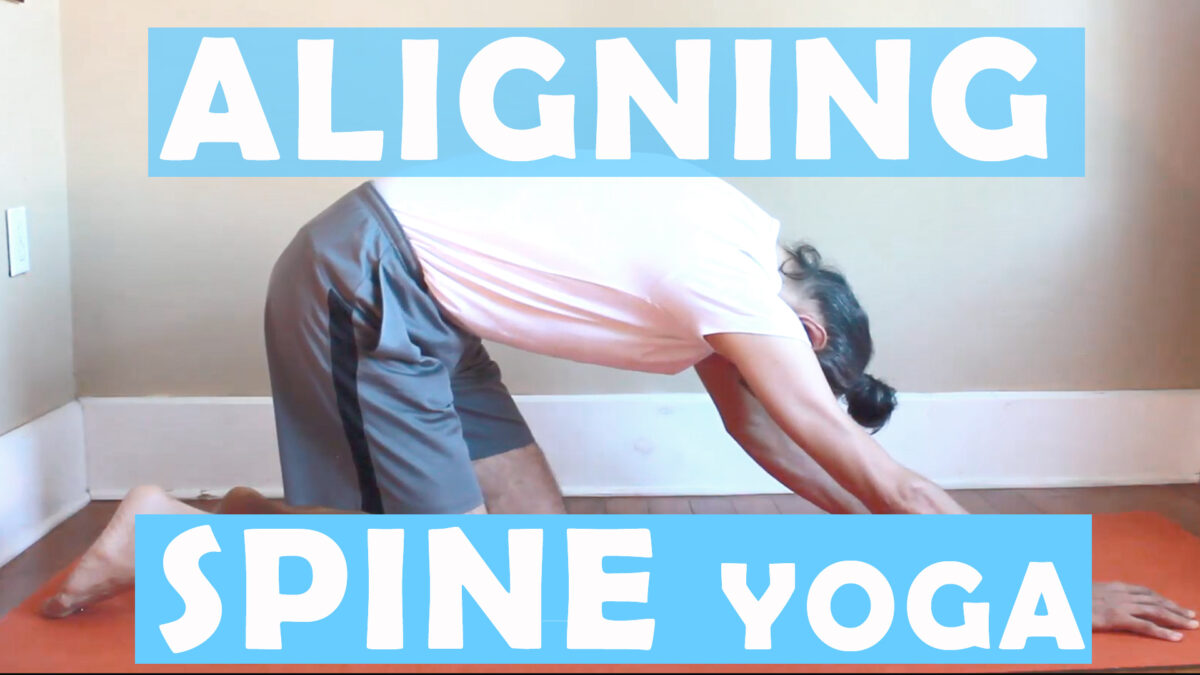
Health, compassionate interaction (part 5)
November 19, 2024
Health, Summary and application (part 6)
January 5, 2025
Health, compassionate interaction (part 5)
November 19, 2024
Health, Summary and application (part 6)
January 5, 2025Video Aligning your Spine


Aligning your spine
Explore spinal movements for enhancing balance and improving alignment.
What is spinal alignment?
This sequence leads you through a mindful exploration of the movements of your spine to optimize alignment and address imbalances. The session includes alternating movements of your spine between rounding (flexion) and mild arching (extension). The main exploration in this practice involves rounding your spine (flexion) while varying the position of your arms and legs to uncover patterns of tension in the torso, shoulders and hips. Many people find that these variations can be helpful in addressing imbalances and improving alignment. The final spinal twists complement the session to release remaining tension. The session concludes with guided relaxation based on gentle breath elongation.
Purpose of this practice
- Maintain a healthy range of movement in your spine.
- Explore how the shoulder girdle and pelvic girdle influence movement and patterns of tension in your torso.
- Release accumulated tension in torso, shoulders and hips.
- Enhance overall alignment.
- Create a general sensation of ease in the body without any strain or agitation.
Guidelines and practice (22 mins)
Suggestions for this practice
Keeping your wrists strong and healthy
Since a good portion of this session includes using your hands and knees to support your body, please consider the following options to strengthen your hands and avoid strain.
Creating an action of gripping with your hand as if trying to grab the mat.
Please ensure that you use the most suitable support for your hands and wrists, perhaps varying the type of support you use to strengthen your hand and wrist gradually. Also, consider taking a break between postures to give your hands and wrists a chance to rest.
More suggestions for this practice
- Keep your breath smooth, continuous and enjoyable during this sequence.
- Go slowly so that you can notice the changing sensations in your body.
- Attend to what moves a lot and what does not move very much. Explore moving less where you can move a lot and moving more where there is restriction.
- Do the best that you can without squashing your joints.
- Avoid over-stretching your joints.
- During this sequence keep your spine elongated.
- As best as you can try to make your spinal movements sequential, initiating movement from your tailbone and sitting bones and moving each section of your spine slowly and deliberately.
- Very often lengthening of the lower back is diminished when your body moves back toward the heels, please keep your spine long and with an even curve throughout, even if that means that your torso does not go as far back as you think it should.
- When your torso is rounded towards the heels, your shoulder blades might slide toward the ears. To prevent this, press down with your armpits toward the floor to lengthen your upper shoulders and to make your shoulders more stable.
- Rounding your spine combined with the variations in the positions of your hands and knees on the floor will ask your spine, shoulders and hips to move in somewhat unfamiliar and unusual ways. Notice if these variations can uncover and decrease some existing tension. If one side feels more restricted than the other, it may be useful to repeat the configuration that makes those restrictions more evident. You may also choose to stay in that position for several breaths, of course, without forcing anything.
- Remember to feel the effects of the practice and to ensure that nothing is unnecessarily sore.
- Trust that doing what you can do comfortably and with consistency will gradually expand your natural range of movement while minimizing the risk of injury.
- Smile and enjoy!